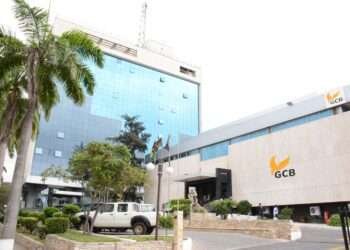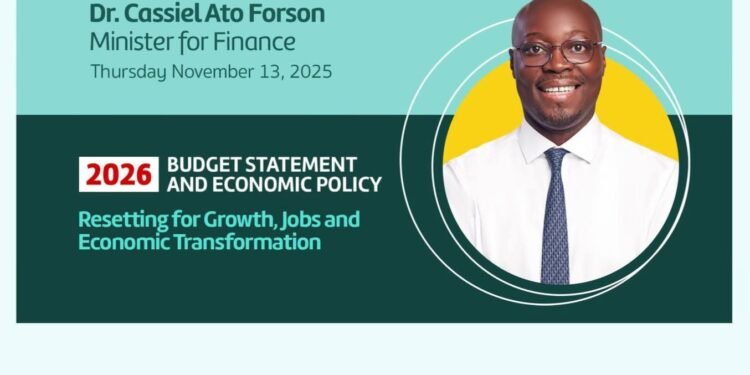Ghana’s latest treasury bills auction has once again highlighted the shifting preferences of investors, as government securities struggled to attract enough bids to meet the targeted amount.
For the fourth consecutive week, the Treasury fell short of its funding goal, underscoring a broader trend of investors gravitating toward Bank of Ghana (BoG) bills that continue to offer comparatively attractive yields.
According to the auction results released by the BoG, the government aimed to raise GH¢3.86 billion to support budgetary needs and refinance maturing debt. However, it managed to secure only GH¢3.64 billion in bids, missing the target narrowly by 5.61%. This marks the fourth straight auction where the government has failed to fully cover its target, amplifying concerns about liquidity pressures and the rising competition between Treasury instruments and BoG bills.
The results showed that investor appetite remained heavily skewed toward shorter-term instruments. The 91-day bill accounted for the lion’s share of subscriptions, with bids totaling GH¢2.869 billion—about 75% of the total tendered. For the 182-day bill, investors submitted GH¢616.79 million in bids, while the 364-day bill received just over GH¢129 million. Of the latter, the Treasury accepted a mere GH¢60.81 million, reflecting caution among investors toward longer maturities.
BoG Bills Emerge as the Preferred Haven
Analysts say the government’s inability to meet its auction target is partly driven by investors’ clear preference for Bank of Ghana bills. Unlike Treasury bills, which are used to finance government expenditure, BoG bills serve primarily as a liquidity management tool for monetary policy. They tend to attract higher yields to incentivize banks and institutional investors to lock up funds, effectively mopping up excess liquidity from the system.
The BoG bills are offering a premium over Treasury bills, making them much more appealing to investors who are seeking better returns in the current environment, an Accra-based fixed-income analyst explained.
Indeed, the yield on the 91-day Treasury bill declined by a basis point to 14.69%, while the 182-day bill’s yield fell to 15.25% from the previous 15.45%. Conversely, the yield on the 364-day bill inched up by 9 basis points to 15.65%. Despite this marginal increase in longer-term yields, many investors have opted to stay on the shorter end of the curve or redirect funds into BoG securities.
Implications for Government Financing
The recurring shortfalls at auction raise questions about the government’s funding strategy amid growing competition from the central bank’s instruments. With public finances under strain, Treasury bills remain a crucial pillar for short-term borrowing. Yet the lower yields offered relative to BoG bills may continue to hamper the government’s ability to consistently hit its targets.
Some market watchers warn that if the government does not recalibrate its pricing strategy to make T-bills more competitive, it may have to rely more heavily on alternative funding sources or consider further adjustments to spending plans.
Yield dynamics are very important. If investors see a better return on BoG bills with similar risk profiles, they will naturally gravitate there. The government faces a delicate balancing act between controlling borrowing costs and ensuring sufficient participation.
Investors’ Preference for Shorter Tenors
The data from this week’s auction reaffirms the dominance of shorter maturities in the market. The 91-day bill remained the preferred instrument, as many investors continue to prioritize liquidity and avoid locking in funds for extended periods. This cautious approach likely reflects expectations that interest rates could shift again in the coming months as inflation stabilizes and the broader economic outlook evolves.
In total, the Treasury accepted GH¢3.34 billion in bids across the three maturities, still falling short of the GH¢3.86 billion goal. While the gap may appear modest, repeated underperformance increases cumulative financing pressures.
As yields on Treasury bills remain relatively subdued, the BoG’s more generous returns continue to sway market sentiment. The government will likely face ongoing challenges in meeting auction targets unless it can either raise rates to narrow the yield differential or find ways to boost confidence in its short-term debt instruments.
For investors, the calculus remains simple: in an environment of competing instruments, the path to higher returns dictates where capital flows. Unless policy adjustments are made, BoG bills will likely continue to overshadow Treasury bills in the months ahead.
READ ALSO: World Bank Unlocks $360 Million Lifeline to Anchor Ghana’s Economic Renewal























